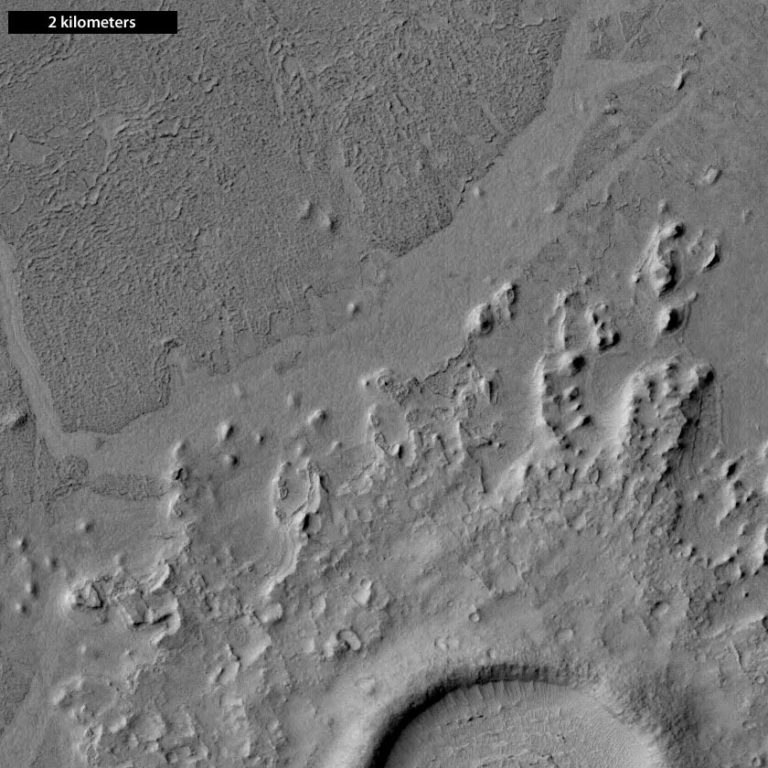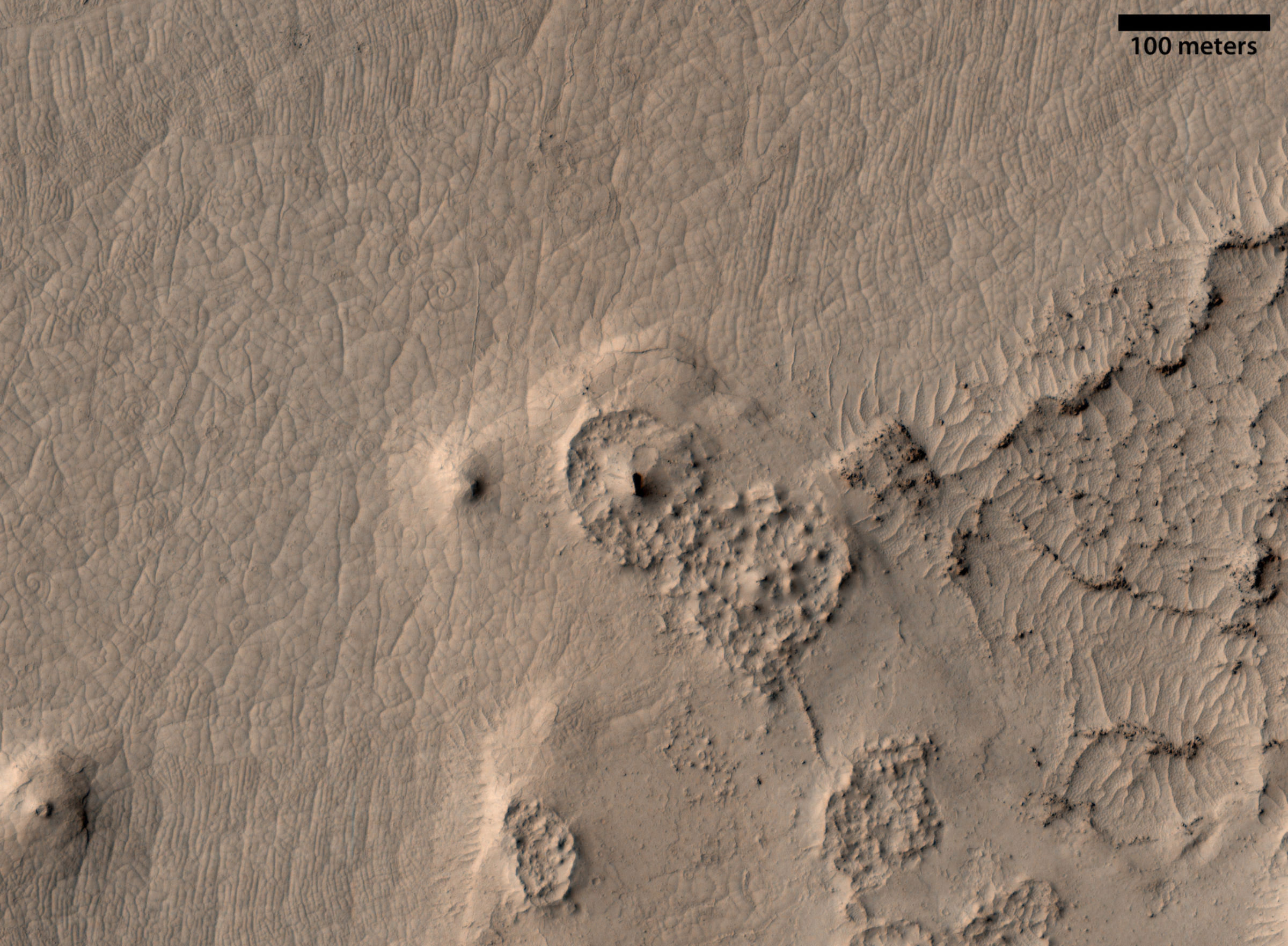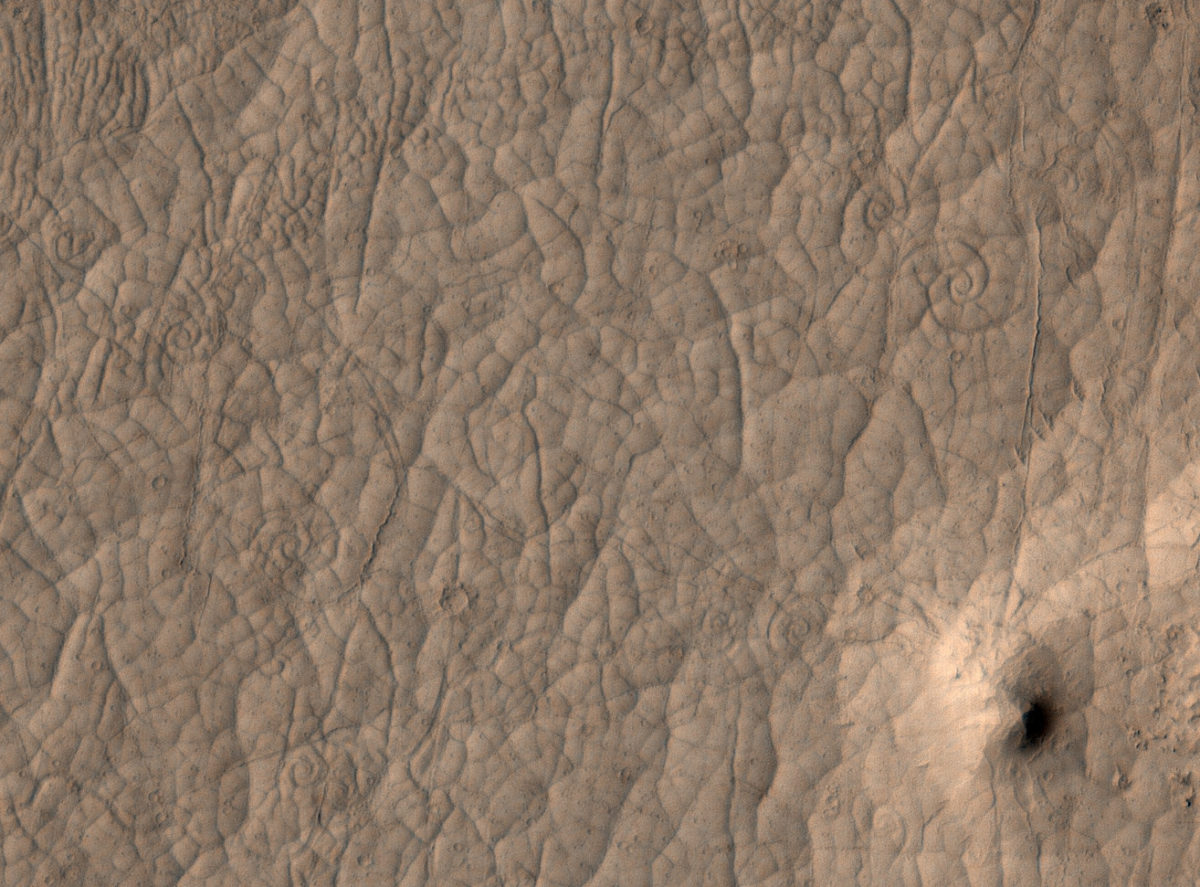Emily Lakdawalla • Apr 26, 2012
Swirly lava patterns in beautiful HiRISE images
Here is a lovely Mars Reconnaissance Orbiter Context Camera photo of a geologic feature called a "pedestal crater" on Mars. Pedestal craters have a peculiar shape to the splash of ejecta that surrounds them, where the ejecta apparently sits higher than the surrounding terrain. North of the crater, you can see a lighter-toned, flat valley that separates two higher-standing darker-toned plates. When you click to enlarge, this photo has a scale of 20 meters per pixel.

OK, now, let's zoom in. I'm not zooming in on the crater; I'm zooming in on the channel to its northeast. This cropped piece is at the full resolution of the Context Camera, in this case 5.42 meters per pixel. You can get a sense of some kind of texture inside that lava channel, but it's going to take some higher resolution to see what that texture is.

When you talk about high resolution on Mars, you are, of course, talking about the HiRISE camera on Mars Reconnaissance Orbiter, which typically photographs Mars at a resolution of about 27 centimeters per pixel. Think about that for a second; look at your foot. Your foot is pretty similar in length to the size of a HiRISE pixel. Anyway, here we are, zooming in; it's in color now because HiRISE can do that. The color doesn't add much information -- this place is pretty bland, color wise. But the texture is cool; you can see patterned ground, polygonal shapes. It can be hard with space images sometimes to figure out what's out and what's in. In this photo, the Sun is coming from the left; the knobs in the center are local highs. The patterned ground is hummocky, with the lines being lows and the centers of the polygons being high.

Now, patterned ground is pretty common on Mars; it can form in a variety of ways, in volcanic flows or in ground containing ice. Here, we're close to the equator, so present-day ground ice is pretty unlikely, but things could've been different in the past.
But wait. Look again at that photo. Some of that patterned ground is making some remarkably weird patterns. Take a look at this zoom; if you enlarge it you'll be looking at the full HiRISE scale of 27 centimeters per pixel. What on Mars could have made these geometric spirals?

It turns out it's a process that operates on Earth as well. Here's the explanation from a paper published today in Science, by Andrew Ryan and Phil Christensen.
The spiral patterns in Cerberus Palus are morphologically consistent with lava coils on Earth that form on the surface of active and stagnated pahoehoe lava flows and lava lakes. Terrestrial lava coils range from 5 cm to at least 10 m in diameter. Two types of coils have been observed in terrestrial lava flows, each with slightly different characteristics and formation processes. The first forms along distinct shear zones between two blocks of crust above flowing lava. Strips of crust are pulled away and physically coiled from the differential motion. These coils are typically small (1 m or less in width) and may have centers higher, lower, or coplanar with the margin. The second, larger form also develops in shear zones where wrinkles in thin congealed lava skins or molten lava exuded through ephemeral shear cracks rotate slowly.
Neato!
Support our core enterprises
Your support powers our mission to explore worlds, find life, and defend Earth. You make all the difference when you make a gift. Give today!
Donate

 Explore Worlds
Explore Worlds Find Life
Find Life Defend Earth
Defend Earth

